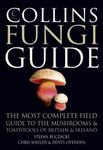![Fungi in Bioremediation Fungi in Bioremediation]()
Click to have a closer look
About this book
Contents
Customer reviews
Related titles
About this book
Bioremediation is an expanding area of environmental biotechnology, and may be defined as the application of biological processes to the treatment of pollution. Much bioremediation work has concentrated on organic pollutants, although the range of substances that can be transformed or detoxified by micro-organisms includes both natural and synthetic organic materials and inorganic pollutants, such as toxic metals. The majority of applications developed to date involve bacteria and there is a distinct lack of appreciation of the potential roles and involvement of fungi in bioremediation, despite clear evidence of their metabolic and morphological versatility.
This book highlights the potential of filamentous fungi, including mycorrhizas, in bioremediation and discusses the physiology and chemistry of pollutant transformations.
Paperback re-issue, originally published in 2001.
Contents
List of contributors; Preface; 1. Degradation of plant cell wall polymers Christine S. Evans and John N. Hedger; 2. The biochemistry of ligninolytic fungi Patricia J. Harvey and Christopher F. Thurston; 3. Bioremediation potential of white rot fungi C. Adinarayana Reddy and Zacharia Mathew; 4. Fungal remediation of soils contaminated with persistent organic pollutants Ian Singleton; 5. Formulation of fungi for in situ bioremediation Joan W. Bennett, William J. Connick. Jr., Donald Daigle and Kenneth Wunch; 6. Fungal biodegradation of chlorinated monoaromatics and BTEX compounds John A. Buswell; 7. Bioremediation of polycyclic aromatic hydrocarbons by ligninolytic and non-ligninolytic fungi Carl E. Cerniglia and John B. Sutherland; 8. Pesticide degradation Sarah E. Maloney; 9. Degradation of energetic compounds by fungi David A. Newcombe and Ronald L. Crawford; 10. Use of wood-rotting fungi for the decolourisation of dyes and industrial effluents Jeremy S. Knapp, Eli J. Vantoch-Wood and Fuming Zhang; 11. The roles of fungi in agricultural waste conversion Roni Cohen and Yitzhak Hadar; 12. Cyanide biodegradation by fungi Michelle Barclay and Christopher J. Knowles; 13. Metal transformations Geoffrey M. Gadd; 14. Heterotrophic leaching Helmut Brandl; 15. Fungal metal biosorption John M. Tobin; 16. The potential for utilizing mycorrhizal associations in soil bioremediation Andrew A. Meharg; 17. Mycorrhizas and hydrocarbons Marta Noemi Cabello; Index.
Customer Reviews
Edited By: GM Gadd
481 pages, 39 figs, 21 tabs
'... this book will become a standard text for years to come.' Roy Watling, BSS News 'Recommended to anyone (not just mycologists) with an interest in the expanding field of environmental biotechnology.' Vicki Tariq, Microbiology Today '... well written and well edited ... helpful to the research scientist and student alike ...'. Mycologist 'What a stimulating book! ... the editor and sponsoring Society have to be applauded for their vision'. Mycological Research '... this book is a most useful summary of the current understanding of the bioremediation potential of fungi ... This book is a major source of references and techniques for anyone interested in using the chemical activities of fungi to transform waste substrates.' Mycopathologia




































